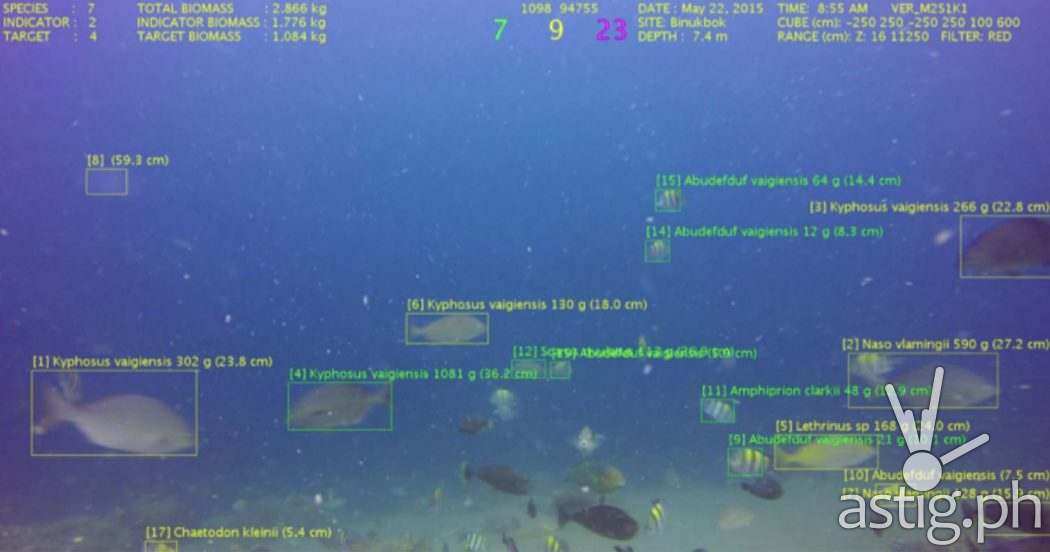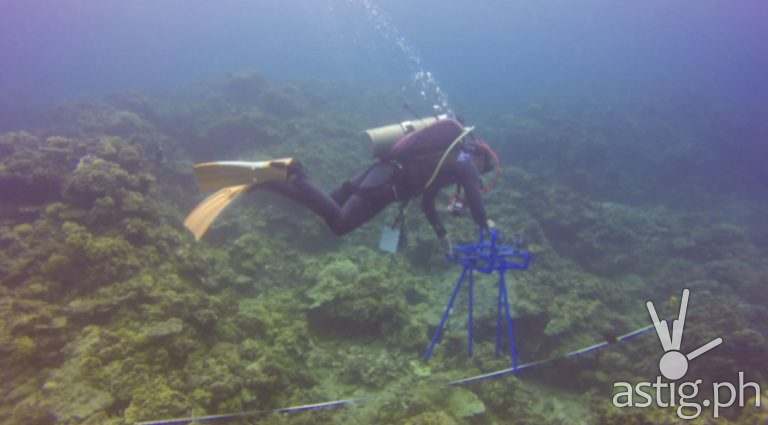PHILIPPINES – Monitoring the health of marine environments is a laborious activity, but is essential for evaluating the success of reef protection and rehabilitation initiatives. A fish census commonly involves divers swimming along a transect line, usually marked by a plastic cord, and visually counting and identifying the fish species that they encounter. This painstaking process requires trained experts and highly knowledgeable divers to accurately record data on species, size, and abundance.
In 2016, Dr. Laura David of the University of the Philippines – Diliman College of Science Marine Science Institute (UPD-CS MSI), together with co-author machine intelligence expert Prof. Prospero C. Naval, Jr. of the UP Department of Computer Science (UPD-DCS) presented a conference paper entitled, “FishDrop: Estimation of Reef Fish Population Density and Biomass using Stereo Cameras” which proposed a semi-automated method that combines a stereo camera rig and image recognition software to allow for more efficient and accurate reef fish census.

The proposed technology would enable divers with minimal training to obtain high-quality population and species distribution measurements using the specially developed stereo camera rig and fish video analyzer software.
FishDrop promises to help improve the Philippines’ reef resilience and biodiversity restoration efforts, and contribute towards the overall health of the country’s reef ecosystems.
“Perseverance is necessary to get the concept and the product translated into a patent and commercial venture. It has not been an easy road,” says Dr. David. Like any other intellectual property and patent applications, the journey for FishDrop has been tedious, nevertheless rewarding. Dr. David hopes that through her sharing, she may inspire others to persevere with their own scientific endeavors despite the trudging process.


